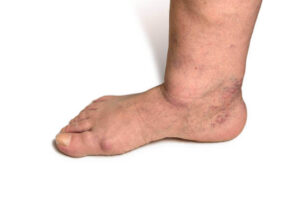
Charcot foot, also known as Charcot arthropathy, is a serious condition that can occur in individuals with diabetes and peripheral neuropathy. This condition causes weakening of the bones in the foot, leading to deformity and potential disability. While Charcot foot cannot be fully reversed, early intervention and appropriate treatment can help manage symptoms and prevent further complications.
Why Does Neuropathy Cause Charcot Foot?
Peripheral neuropathy, a common complication of diabetes, damages the nerves in the feet, leading to loss of sensation and altered biomechanics. This nerve damage can result in repetitive trauma to the foot, leading to fractures and joint damage characteristic of Charcot foot.
Charcot Foot Stages
Charcot foot typically progresses through three stages:
- Acute: In the acute stage, the foot becomes red, swollen, and warm to the touch. This stage is characterized by inflammation and bone destruction.
- Subacute: During the subacute stage, the swelling and inflammation begin to decrease, but deformities may become more apparent as the bones collapse and reshape.
- Chronic: In the chronic stage, the inflammation subsides, but the foot may exhibit severe deformities and instability, increasing the risk of ulcers and other complications.
When Do You Need Charcot Foot Surgery?
Surgery may be necessary in severe cases of Charcot foot, particularly if deformities or instability threaten mobility or increase the risk of complications such as ulcers or infections. Surgical interventions may include realignment of the bones, fusion of affected joints, or correction of deformities to restore function and stability to the foot.
Charcot Foot Treatment to Help With Mobility
Treatment for Charcot foot focuses on reducing inflammation, stabilizing the foot, and preventing further damage. This may involve:
- Immobilization: Keeping the foot immobilized with a cast or brace to prevent weight-bearing and promote healing.
- Orthotic devices: Custom orthotic devices can help redistribute pressure on the foot and provide support to prevent further deformities.
- Medications: Pain management medications and anti-inflammatory drugs may be prescribed to reduce pain and inflammation.
Assistive Devices for Charcot Foot
Assistive devices such as custom footwear, braces, and orthotic inserts can help support the foot and improve mobility for individuals with Charcot foot.
In conclusion, while Charcot foot cannot be fully reversed, early intervention and appropriate treatment can help manage symptoms and prevent further complications. If you or a loved one is experiencing symptoms of Charcot foot, contact DFW Wound Care Center today. Our skilled team specializes in the treatment of diabetic foot wounds and offers advanced wound care techniques at multiple locations across the DFW area. Don’t wait until it’s too late – schedule an appointment with us today to get the care you need.
Contact us
Schedule an appointment
with our specialists by contacting us or calling our:
